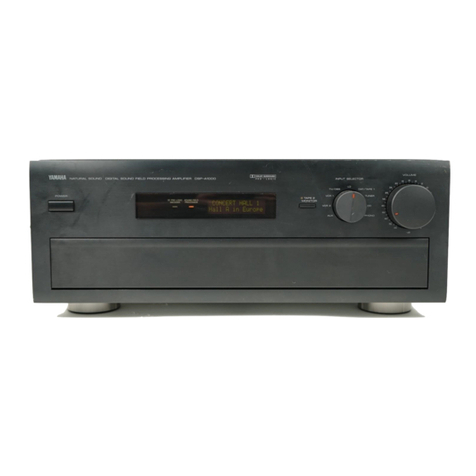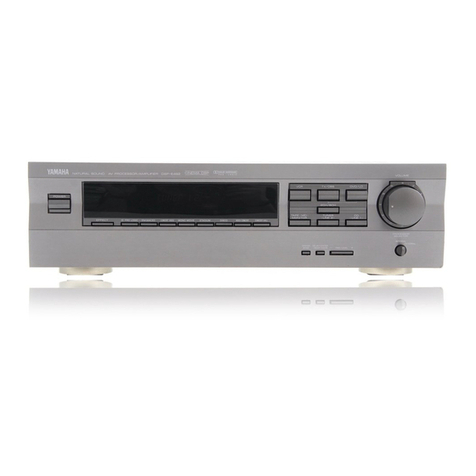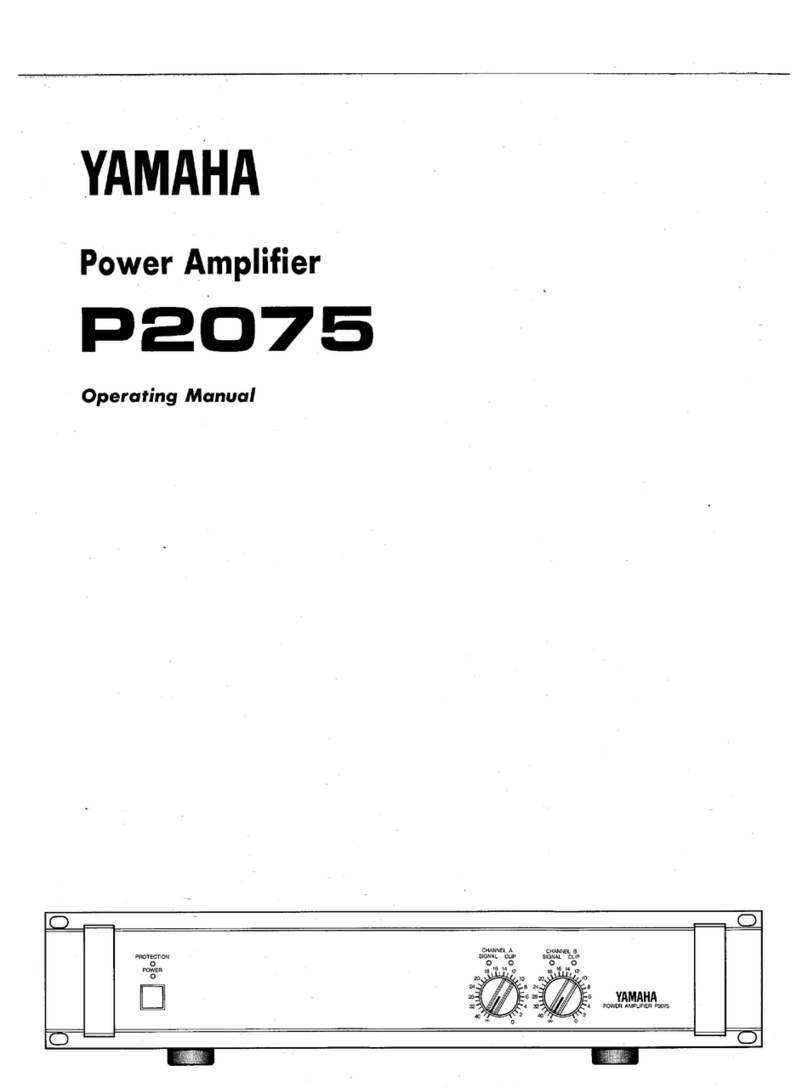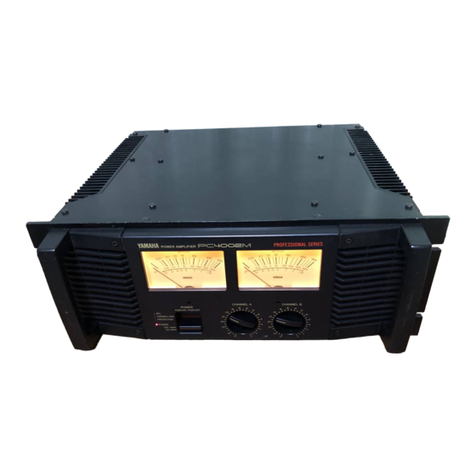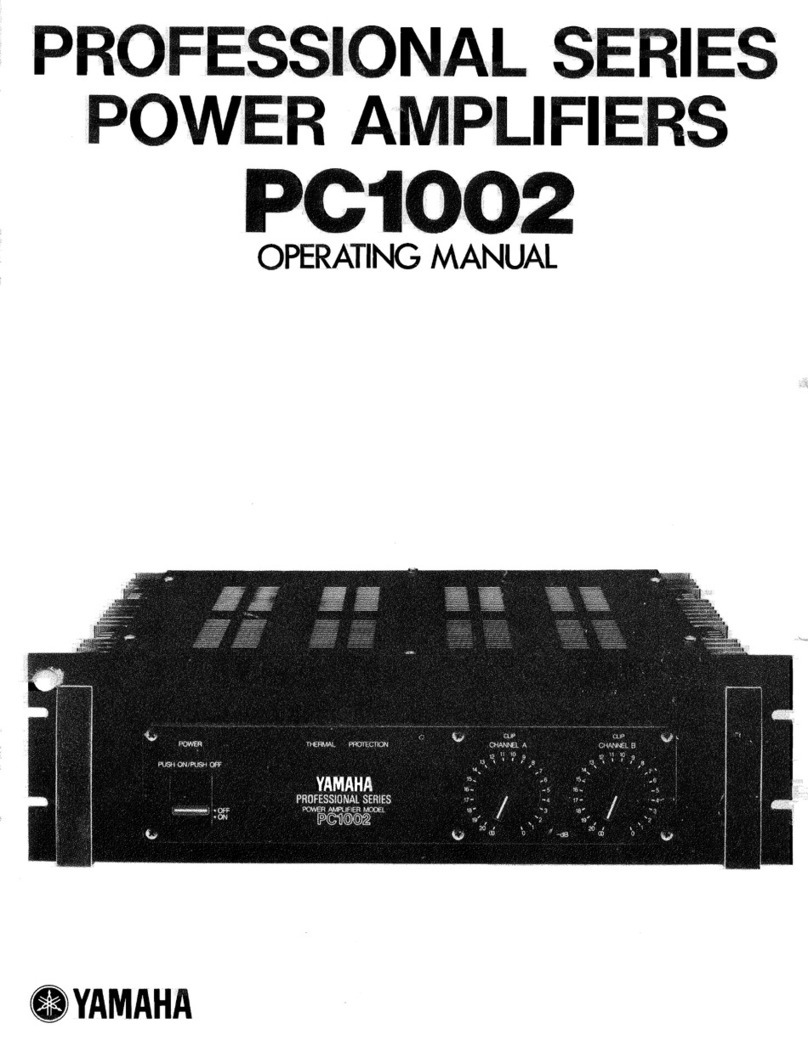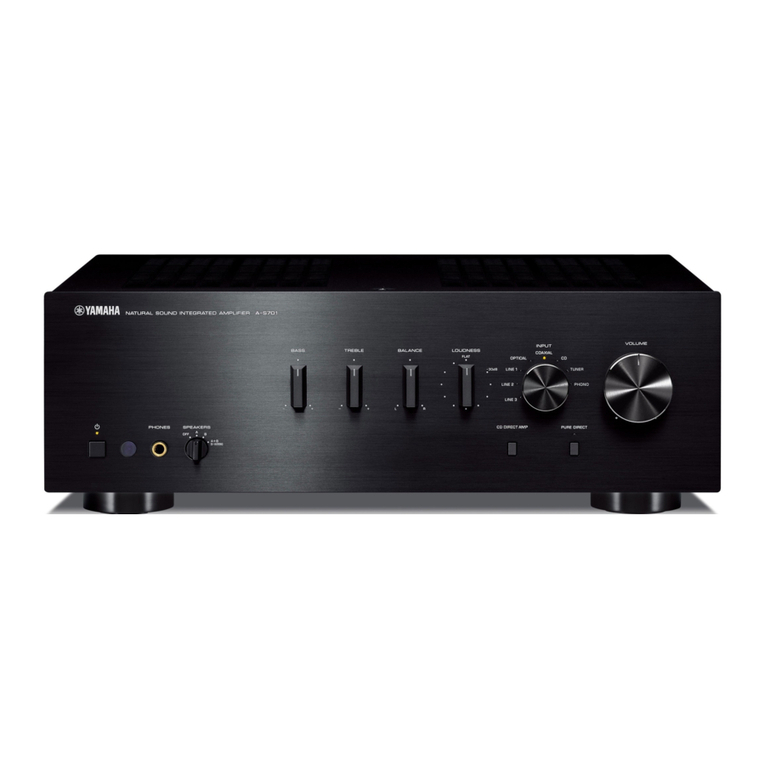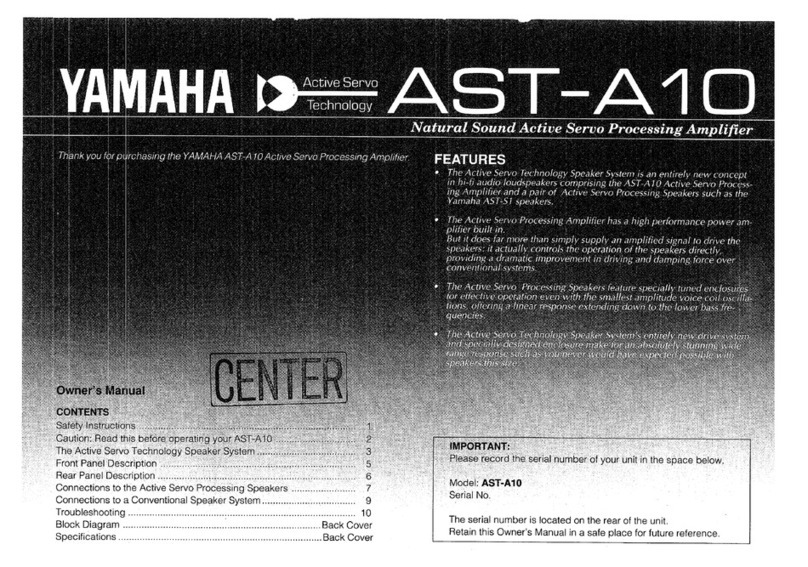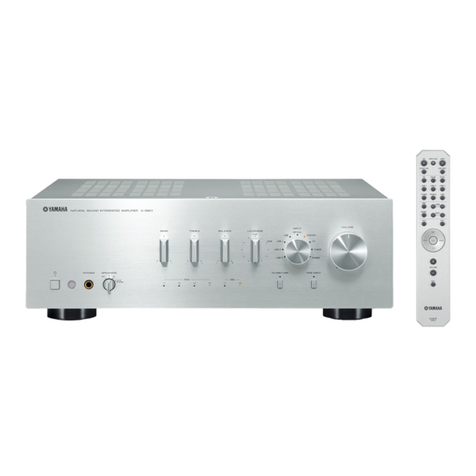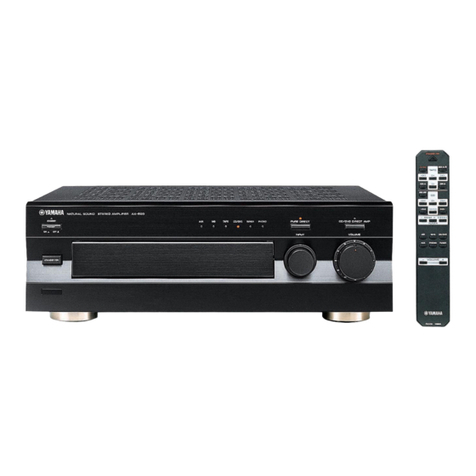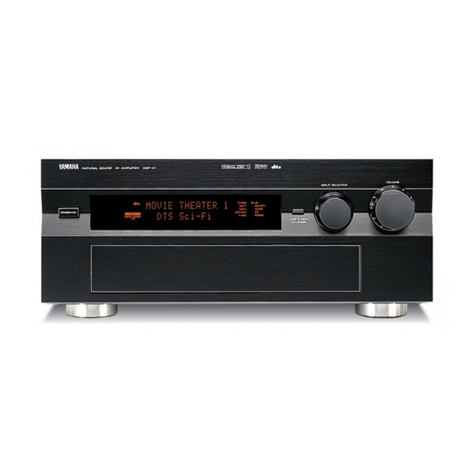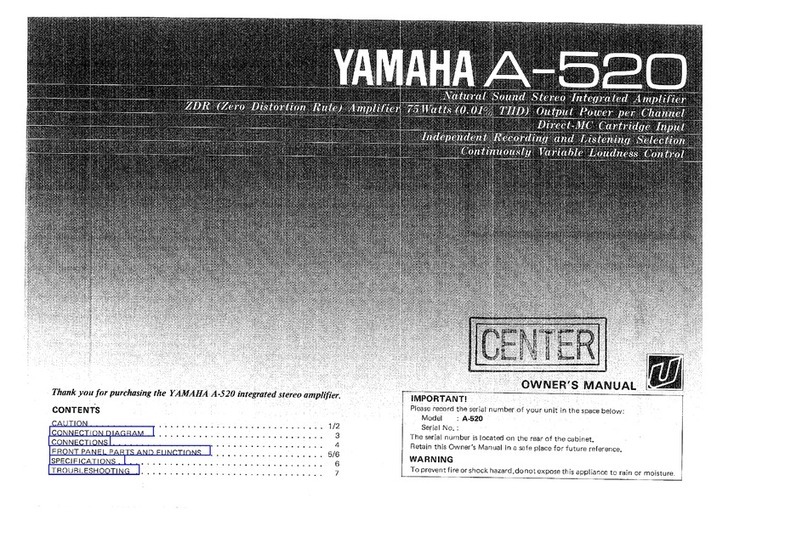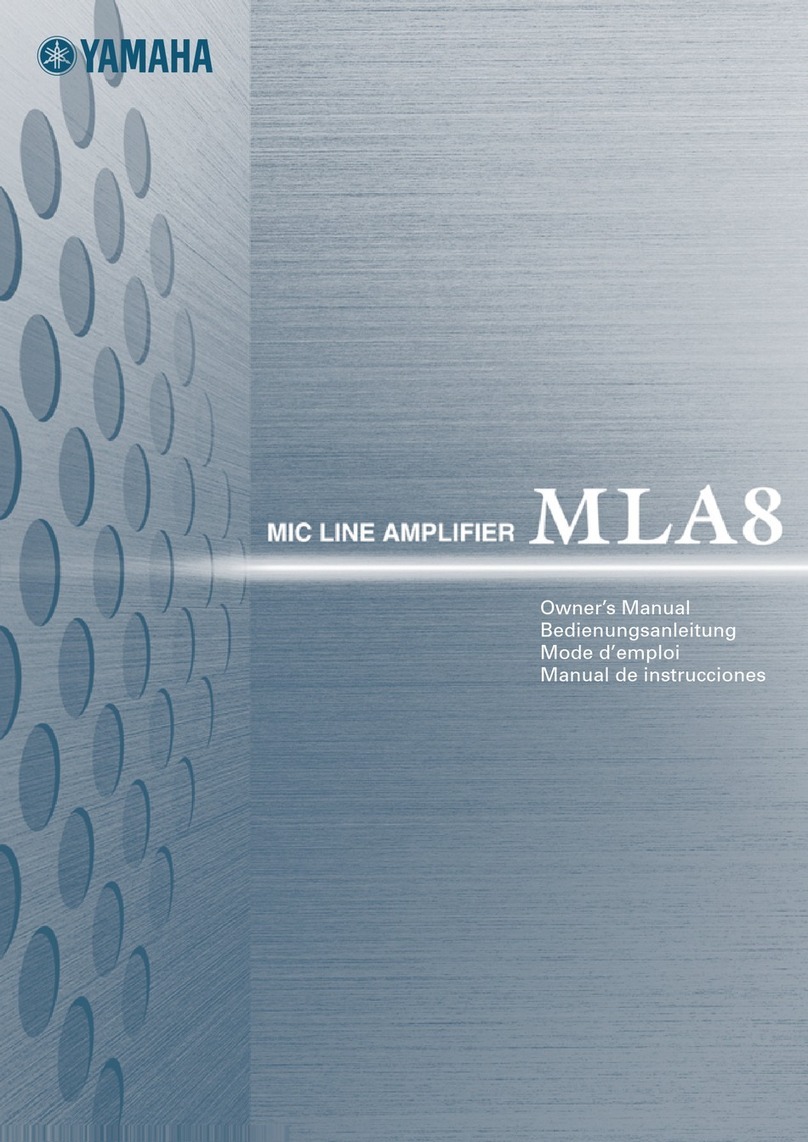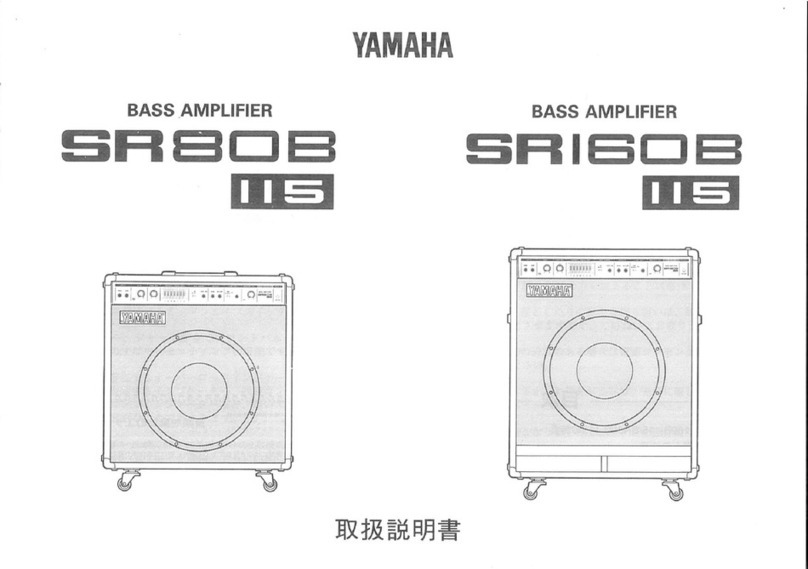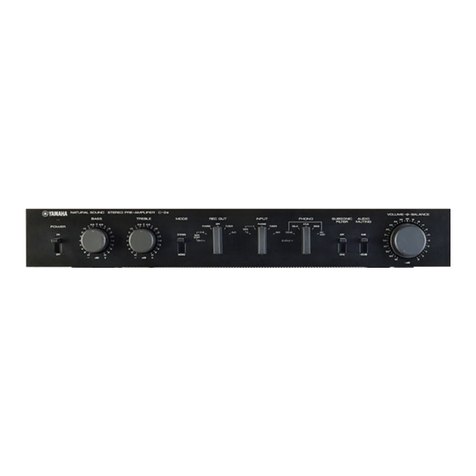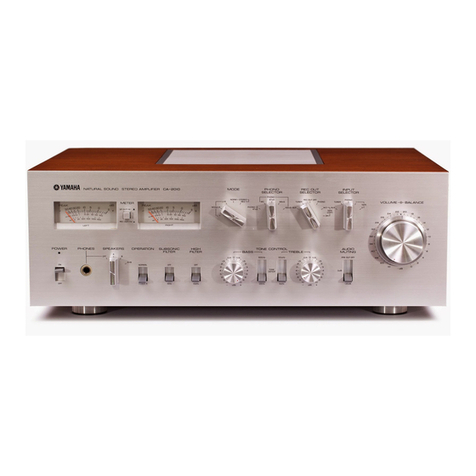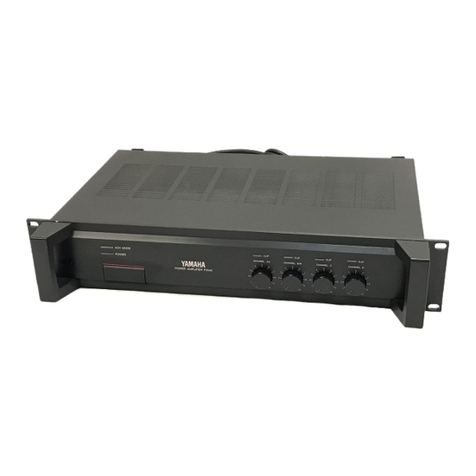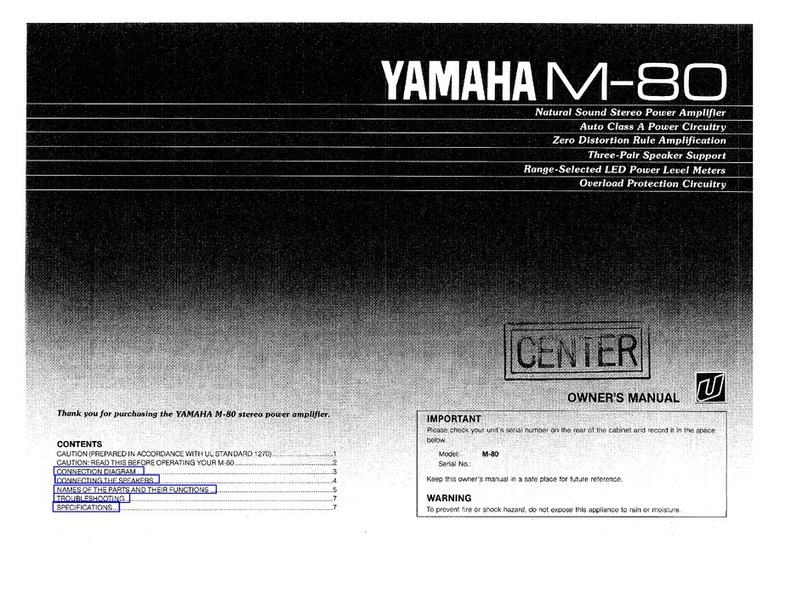
CAUTION:
READ
THIS
BEFORE
OPERATING
YOUR
UNIT.
1
To
assure the tinest performance, please read this manual
carefully. Keep it
in
asafe place for future reference.
2Install this sound system
in
awell ventilated, cool, dry, clean
place -away from direct sunlight, heat sources, vibration,
dust, moisture, and/or cold. Allow ventilation space
of
at least
30
cm
(11-13/16 in) on the top, 20
cm
(7-7/8 in) on the left
and right, and 20
cm
(7-7/8 in) on the back
of
this unit.
3Locate this unit away from otherelectrical appliances, motors,
or
transformers to avoid humming sounds.
4Do not expose this unit to sudden temperature changes from
cold to hot, and
do
not locate this unit
in
an environment with
high humidity (Le. aroom with ahumidifier) to prevent
condensation inside this unit, which may cause an electrical
shock, tire, damage to this unit, and/or personal injury.
5Avoid installing this unit where foreign objects may fall onto
this unit and/or this unit may be exposed to liquid dripping
or
splashing.
On
the top
of
this unit,
do
not place:
-
Other
components, as they may cause damage and/or
discoloration on the surface
of
this unit.
-Burning objects (i.e. candles), as they may cause tire,
damage to this unit, and/or personal injury.
-Containers with liquid in them, as they may fall and
liquid may cause electrical shock to the user and/or
damage to this unit.
6Do not
cover
this unit with anewspaper, tablecloth, curtain,
etc. in order not to obstruct heat radiation.
If
the temperature
inside this unit rises, it may cause fire, damage to this unit,
and/or personal injury.
7
Do
not plug
in
this unit to awall outlet until all connections
are complete.
8
Do
not operate this unit upside-down. It may overheat,
possibly causing damage.
9Do not use force on switches, knobs and/or cords.
10 When disconnecting the power cable from the wall outlet,
grasp the plug;
do
not pull the cable.
11
Do
not clean this unit with chemical solvents; this might
damage the finish. Use aclean, dry cloth.
12 Only voltage specified on this unit must be used. Using this
unit with ahigher voltage than specified is dangerous and may
cause fire, damage to this unit, and/or personal injury.
Yamaha will not be held responsible
for
any damage resulting
from use
of
this unit with avoltage other than specified.
13
To
prevent
damage
by lightning, keep the power cable
disconnected from awall outlet
or
the unit during alightning
storm.
14
Do
not attempt to modify
or
fix this unit. Contact qualified
Yamaha service personnel when any service
is
needed.
The
cabinet should never be opened for any reasons.
15 When not planning to use this unit for long periods
of
time
(Le. vacation), disconnect the
AC
power
plug from the wall
outlet.
16 Install this unit near the AC outlet and where the AC
power
plug can be reached easily.
17
Be
sure to read the
"TROUBLESHOOTING"
section in the
owner's
manual on
common
operating errors before
concluding that this unit is faulty.
18 Before moving this unit, press
POWER
to
tum
off
this unit
and then disconnect the AC
power
plug from the wall outlet.
iii
En
19
VOLTAGE
SELECTOR
(Asia and General models only)
The
VOLTAGE
SELECTOR
on the rear panel
of
this unit
must be set for your local main voltage
BEFORE
plugging
into the wall outlet. Voltages are:
Asia model...
AC
220/230-240 V, 50/60 Hz
General model AC 110/120/220/230-240 V, 50/60 Hz
20
The
batteries shall not be exposed to excessive heat such as
sunshine, fire
or
like.
21 Excessive sound pressure from earphones and headphones
can cause hearing loss.
As long
as
this unit
is
connected
to
the AC wall outlet,
it
is
not disconnected from the AC power source even
if you tum offthis unit by POWER or set
it
to
the
standby mode by
(~
button on the remote control.
WARNING
TO REDUCE THE RISK OF FIRE OR ELECTRIC
SHOCK, DO NOT EXPOSE THIS UNIT TO RAIN
OR MOISTURE.
This unit enters the standby mode when you press
POWER inward to the ON position and then press
(~
button on the remote control. In this state, this unit
is
designed to consume avery small quantity
of
power.
